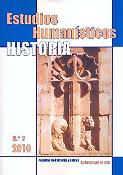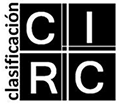La exogamia vivida: sexo, afecto y "papeles" entre los inmigrantes subsaharianos en León
DOI:
https://doi.org/10.18002/ehh.v0i9.3144Palabras clave:
Subsaharianos, Parejas mixtas, Exogamia, Sexualidad, Integración, Sub-Saharan, Mixed cuple, Exogamy, Sexuality, IntegrationResumen
Una consecuencia visible del asentamiento de los inmigrantes subsaharianos en España es la formación más o menos duradera de parejas con los autóctonos. En este trabajo de investigación, desde una metodología cualitativa, se analizan los patrones de exogamia de dichos inmigrantes en León, centrando la atención en las uniones entre miembros de algunas de las diferentes nacionalidades más representativas y mujeres y hombres españoles, principalmente de la provincia de León. Se trata de analizar el perfil de dichas relaciones, conocer la forma que toman y sobre todo medir las diferentes influencias sociales (grado de tolerancia o aceptación) que tienen sobre estas parejas en tanto favorecen o no su integración. El trabajo sugiere que el origen cultural de los subsaharianos puede ser tan importante como los factores sociales, situacionales y personales a la hora de explicar la exogamia y las complicadas dinámicas de convivencia en las uniones mixtas. Se muestra por último, cómo la todavía presente cultura endogámica de los autóctonos leoneses indica un retraso de la anhelada sociedad intercultural
ABSTRACT: A visible result of the settlement of African immigrants in Spain is more or less permanent training of couples with the locals. This article, with a qualitative methodology, analyzes the patterns of intermarriage of such immigrants in Leon, focusing on marriage with members of different nationalities, some of the most representative and Leon Spanish women or men. This allow us to see the profile of these relationships, know how to take and measure all the different social influences (degree of tolerance or acceptance) of these couples in terms of favoring or no, the integration. The work suggests that the cultural origin of Sub-Saharan would be as important as the social, situational and personal in explaining exogamy and the complicated dynamics of living in mixed marriages. On the other hand still present inbred culture of the native Leon indicates a delay of the desired intercultural society.
Descargas
Citas
AMBADIANG, T. (1994). «Prejuicios étnicos en el discurso de los inmigrantes: El caso de los negros africanos». En MARTÍN ROJO, L. y GÓMEZ ESTEBAN, C., y ARRANZ LOSANO, F., y Gabilondo Pujol, A. (eds.). Hablar y dejar hablar (Sobre racismo y xenofobia)), Madrid: Ediciones de la Universidad Autónoma de Madrid, pp. 63-93
ANDERSON, M. (1971). Sociology of the family, Harmandsworth: Penguin Moder sociology Reading, pp. 186-199.
BA, O. (2009). Je suis venu, j’ai vu, je n’y crois plus, Paris : Max Milo, p.243
BARTHELEMY, A. y BENOIT, C. (2010). Cette France là. Paris : La Découverte, 432 p.
BASTIDE, R. (1970). «El prójimo y el extraño. El encuentro de las civilizaciones, Buenos Aires»: Amorrortu (esp. La dimensión sexual), pp. 80-91
BASTIDE, Roger (1961). «Dusky Venus, Black Apollo». Race, Vol.3, pp. 10-18
BENSON, S. (1981). Ambiguous ethnicity interracial families in London, Cambridge: Cambridge University Press, 175 p.
CABRE, A.(1994). «Tensions imminents en els mercats matrimonials». En NADAL, J (coord.) El món cap a on anem, Barcelona: Eumo, pp. 31-56.
CARABAÑA, J. (1983). «Homogamia y movilidad social». Revista de Investigaciones sociológicas, nº 21, pp.61-81
DIEZ N. J. (2005) Las dos caras de la inmigración, Madrid: Ministerio del Trabajo y Asuntos sociales, 415 P.
EDLEY, N. y WETHERELL, M. (1995). Men in perspective. Practice, power and identity. London: Prentice Hall.
EVDOKIMOV, Paul, (1970) «Le mythe moderne de la sexualité», en HENRIQUEZ, F. La sexualité sauvage, Paris : Edition PLANÈTE, pp. 249-251
FANON, F. (1952) Peau noire masques blanc, Paris: Seuil, 183 p.
FAYE, B.B. (2007).«Mariages mixtes au Sénégal. Amours, drames et mélodrame: Les couleurs de l’amour». Week-end Magazine, 2007, 1 de agosto. http://www.xibar.net/ Enquete-Mariages-mixtes-au-senegal-Amours-Drames-Melodrames_a1882.html> [Consultado: 22-07-2010]
FLORIAN, (1962). «Le Grillon». En POMERAND, Gabriel. Le petit philosophe de poche, Paris: Le libre de Poche, 436 p.
HERTON, C.C. (1967). Sex and racism, London: Andre deutch.
INSKO, A. et AL. (1980) Psicología Social Experimental, México: Trillas.
KATZ, A.M. y HILL, R. (1958). «Residential propinquity and marital selection: A review of theory, method and fact». Marriage and family living, nº20, pp. 27-35.
KAUFMANN, J.C. (2004). L’entretien compréhensif. Paris: Armand Collin, 128 p.
KERKHOFF, AC. (1963) «Paterns of homogamy and the field of the eligibles, Social forces». En ANDERSON, M.(ed.) Sociology of the family, Harmandsworth, Penguin Moder sociology Reading, pp. 169-186
KOHN, T. (1998) «The seduction of the exotic: Notes on mixed marriage in east Nepal». En: Breger, R. y Hill, R. (eds) Cross cultural Marriage. Identity and choice, Oxford: Berg, pp. 67-81.
KRISTEVA, J.(1987) Tales of love, New York: Columbia University Press.
LARSON, L.E. (1980) «Religious intermarriage in Canada in the 1980’s», Journal of comparative family studies, 21 (1), pp. 239-250.
LUISA, S., María y L. VICENTE, T., (2007). «Actitudes y comportamientos de la población ante los matrimonios mixtos en España». En IBAROLA-A., A. y H.FIRTH, C., Migraciones en un contexto global, Bilbao: Deusto Publicaciones, pp.129-158.
MC DANIEL, S.A. y TEPPERMAN, L. (2000), Close relations. An introduction to the sociology of families, Scarborough. Ontario: Prentice-Hall Allyn and Bacon Canada.
MERTON, R. (1941) «Intermarriage and the Social Structure: Fact and Theory», Psychiatry: A Journal of the Biology and the Pathology of Interpersonal Relations, vol. 4, pp. 361- 374.
MURSTEIN, B.I. (1986) Paths to marriage, London: SAGE, pp. 51-56
NERÍN, G. (1995) «El mestissatge, una peculiaritat equato-guineana». En Étnia i nació als mons africans, Barcelona: l’Avenç, cd.clio-12, pp.189-215.
NKWETO S. F. (1992) «She’s gotta have it: The representation of black female sexuality on film», en BONNER, F. et AL. (eds.) Imaging woman cultural representation and gender, London: Polity Press and the Open University, pp. 210-220.
RODRÍGUEZ, D. (2002), Endogamia, exogamia y relaciones interétnicas, un estudio sobre la formación y dinámica de la pareja y la familia, centrado en inmigrantes de Senegal y Gambia entre Cataluña y África, Barcelona: Universidad Autónoma de Barcelona, 701 p.
RODRÍGUEZ, D. (2004), «Inmigración y mestizaje hoy. Formación de matrimonios mixtos y familias transnacionales de inmigrantes en Cataluña». En Migraciones, vol.16, pp.77- 120.
ROUSSEL, (1975), Le mariage dans la société française contemporaine. Faits de société. Données d’opinion. Paris: P.U.F
SALGADO, E. (1974) Erotismo y sociedad de consumo. El desnudo mundo de los años setenta, Barcelona: E. Bruguera, 325 p.
FAISANG, S. y JOURNET, O.(1988) La femme de mon mari, Anthropologie du mariage polygamique en Afrique et en France, Paris: L’Harmattan, 172 p
VARRO, G. (1995) «La notion de mariage mixte». En VARRO, G. (eds.) Les couples mixtes et leurs enfants en France et en Allemagn,. Paris: Armand Colin, pp. 29-51.
VIDAL, J.M (2007) La Iglesia alerta a los curas ante la oleada de bodas religiosas de conveniencia con inmigrantes. el Mundo, edición digital del 10-12-2007 [Consultado: 13-07-2010]
ZONABEND, F. (1981) «Le très proche et le pas très loin. Reflexions sur l’organisation du champ matrimonial des sociétés à structure de parenté complexe». En Ethnologie française, XI, 4, pp. 311-318.
Descargas
Publicado
Cómo citar
Número
Sección
Licencia
Derechos de autor 2011 Kouadio Alexis Lally, Óscar Fernández Álvarez

Esta obra está bajo una licencia internacional Creative Commons Atribución-NoComercial-CompartirIgual 4.0.
Los autores que publican en esta revista están de acuerdo con los siguientes términos:
1.- Los autores ceden de forma no exclusiva los derechos de explotación (reproducción, distribución, comunicación pública, transformación) a la Universidad de León, por lo que pueden establecer, por separado, acuerdos adicionales para la distribución no exclusiva de la versión de la obra publicada en la revista (por ejemplo, alojarlo en un repositorio institucional o publicarlo en un libro), con un reconocimiento de su publicación inicial en esta revista.
2.- Este trabajo se encuentra bajo la Creative Commons Attribution-NonCommercial-ShareAlike 4.0 International License. Puede consultarse desde aquí la versión informativa y el texto legal de la licencia.
3.- Se permite y se anima a los autores a difundir electrónicamente las versiones pre-print (versión antes de ser evaluada) y/o post-print (versión evaluada y aceptada para su publicación) de sus obras antes de su publicación, ya que favorece su circulación y difusión más temprana y con ello un posible aumento en su citación y alcance entre la comunidad académica.








